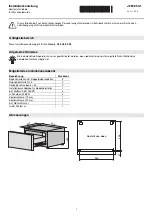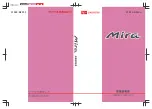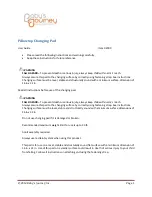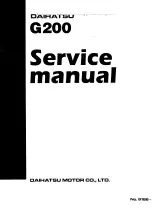
Haltebügel (3), mittlerer Bügel (2) und Trägerbügel
(4) am Grundgestell (1) montieren.
Hinweis:
Ziehen Sie die Rändelmuttern (12) noch nicht
fest an, da der Fahrradträger Ihrem Auto angepasst wer-
den muss.
Die Fahrradträgerprofile (16) seitlich auf die
Schraubenköpfe stossen und anschliessend die
Sicherungsriemenhalter (19) mit den eingefädelten
Sicherungssriemen (17) + (18) ebenfalls in das
Trägerprofil schieben.
Die Schrauben (21 ) von oben durch die Bohrungen
am Trägerbügel (4) stossen und mit den Muttern (20)
und den Unterlegescheiben (11) fixieren.
Die Muttern (20) fest anziehen.
Die Abschlusskappen (22) auf das Profilende stecken
(links und rechts).
Montieren Sie die langen Zurrgurten (23) an den
oberen und die kurzen Zurrgurten (24) an den unteren
Klemmschnallen (13). Achten Sie darauf, dass Sie die
Zurrgurten richtig in die Klemmschnallen einführen.
Die Gummistützen (14) mit einem scharfen
Messer aufschneiden. Zwei Gummistützen (14) von unten
auf das Grundgestell (1) und zwei Gummistützen (14)
auf den mittleren Bügel (2) drücken.
Hinweis:
Achten Sie bei der Demontage des Fahrrad-
trägers darauf, dass die vier Gummistützen (14)
nicht verloren gehen.
Bitte halten Sie die Sicherheitsvorschriften
für Ihre Sicherheit
und für die Sicherheit Dritter strikte ein!
Die Auflegepunkte am Auto von Staub und Schmutz
reinigen und das Gestell auflegen. Den mittleren Bügel
(2) dem Wagentyp anpassen und die Rändelmuttern
(12) festschrauben.
Achten Sie darauf, dass der mittlere Bügel so nah wie
möglich an die Heckklappe bzw. den Kofferraumdeckel
zu stehen kommt.
Zwei lange Zurrgurten (23) an der oberen Kante der
Heckklappe (Bus, Kombi usw.) oder des Kofferraumdek-
kels (Stufenheck) einhaken. Achten Sie darauf, dass die
Zurrgurten richtig in die Klemmschnallen eingeführt
sind.
F
E
D
C
B
A
Fit the fixing bracket, (3), the central one (2) and
the bicycle rack bracket (4) to the frame (1).
Attention: do not fully tighten the knurled nuts (12) yet,
because the bicycle rack must firstly be adapted the car’s
shape.
Slide the head of the screws into the sides of the
bicycle rack profiles (16) and then slide in the supports
for the safety belts (19) already passed through their
belts (17) + (18).
Insert the screws (21) from above, through the bicycle
rack bracket holes (4) and fix with the nuts (20) and the
washers (11).
Tighten the nuts firmly (20).
Fit the caps (22) to the right and left ends of the profiles.
Attach the 2 long anchor belts (23) to the upper
tightening buckles (13) and the 4 short anchor belts (24)
to the lower tightening buckles (13).
Make certain that the belts are correctly inserted in their
respective buckles.
Cut into the support sleeves (14) with a sharp knife.
Slide in two sleeves (14) starting from the bottom of the
frame (1) and two sleeves (14) to the central bracket (2).
Tip:
when dismounting the bicycle rack, take care not to
lose the 4 support sleeves (14).
For your own safety and that of others,
scrupulously follow the safety warnings.
Eliminate any dirt or dust from the contact surfaces
of the car and rest the bicycle rack there.
Adapt the central bracket (2) to the car and tighten the
knurled nuts (12) well.
Make sure that the central bracket is as close as possible
to the rear door and/or the boot lid.
Hook the 2 long belts (23) onto the upper edge of
the rear door (minibus, station wagon, etc.), or to the
upper edge of the boot lid (rear cut-off part). Make cer-
tain that the belts are correctly inserted into their respec-
tive buckles.
F
E
D
C
B
A
Montage
Fitting
D
GB
Inbetriebnahme und Bedienung
Setting up and use
D
GB
5
Содержание BICI OK 2
Страница 4: ......
Страница 8: ......
Страница 14: ...P O Q R S T max 30 kg T max 45 kg 2...
Страница 20: ...P O Q R S T max 30 kg T max 45 kg 8...
Страница 26: ...P O Q R S T max 30 kg T max 45 kg 14...
Страница 32: ......
















































